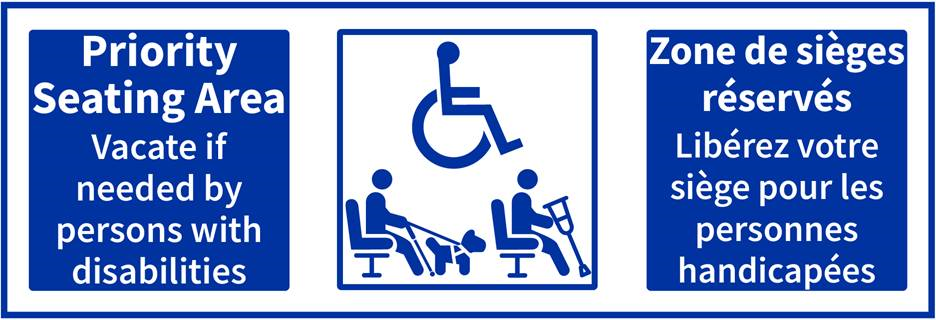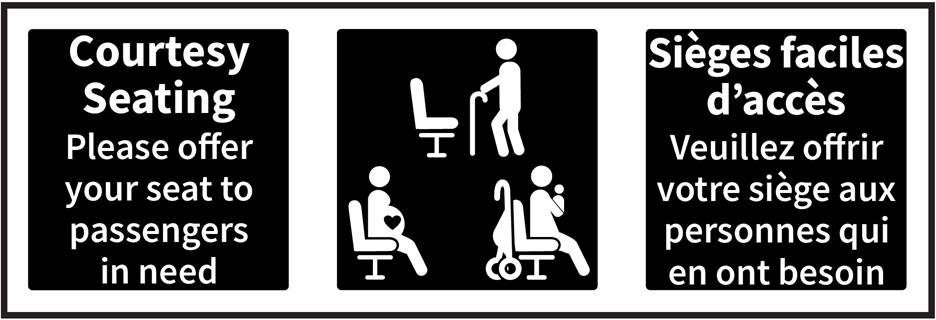Under new policy, passengers asked to save seats in Priority Seating Area for passengers with disabilities, move elsewhere when asked
Winnipeg, MB – Winnipeg Transit is launching a campaign to educate passengers about their role in accessible public transportation and a Council-approved policy for priority and courtesy seating areas on buses. Priority and Courtesy Seating Area Policy .
The policy outlines that priority seating is designated for passengers with a disability, and courtesy seating is for others who benefit from being seated near a door, including seniors and families traveling with young children. It will take a combined effort from all passengers to ensure priority seating is available for those it’s designated for.
“For some passengers with disabilities, access to priority seating can be the same as access to the bus,” said Councillor Matt Allard, Chair of the Standing Policy Committee on Infrastructure Renewal and Public Works. “This policy outlines the important role of all passengers to keep transit accessible to everyone, by being prepared to move to another place on the bus if called to.”
Under the policy, passengers are asked to save seats in the Priority Seating Area for passengers with disabilities. When a passenger with a visible or invisible disability who requires a seat in the priority area boards a bus, passengers who don’t have a disability sitting in that area will be asked to move to another location on the bus. The operator will play an automated message with this request, and if necessary, may also remind other passengers directly to vacate the area.
The policy will go into effect following three months of public education, on October 5, 2022.
A passenger with a disability will not be not required to move to make space for another passenger with a disability; however, if a mobility aid securement space is needed, they may be encouraged to move to alternate seating, as wheelchair or scooter users may not be able to access the bus otherwise.
Look for these signs coming to Transit buses to identify priority and courtesy seating areas:


The new policy requires that passengers must be able to fold and store strollers on buses if necessary to ensure the priority seating area is available for passengers with disabilities, and follow size guidelines for strollers. Winnipeg Transit has also identified size guidelines for wheelchairs and scooters.
Winnipeg Transit is committed to its primary goal to ensure accessible transportation for the duration of the entire trip including boarding and exiting at bus stops. The new policy also enhances accessibility by stating passengers should allow persons with a disability to board the bus first.
Passengers who wish to learn more are invited to attend online information sessions to be held over the coming weeks. Dates and times will be posted on winnipegtransit.com
Winnipeg Transit is committed to meeting its requirements under the Accessibility for Manitobans Act and ensuring its operators and inspectors are trained in areas related to accessibility to help provide the best customer service possible.
